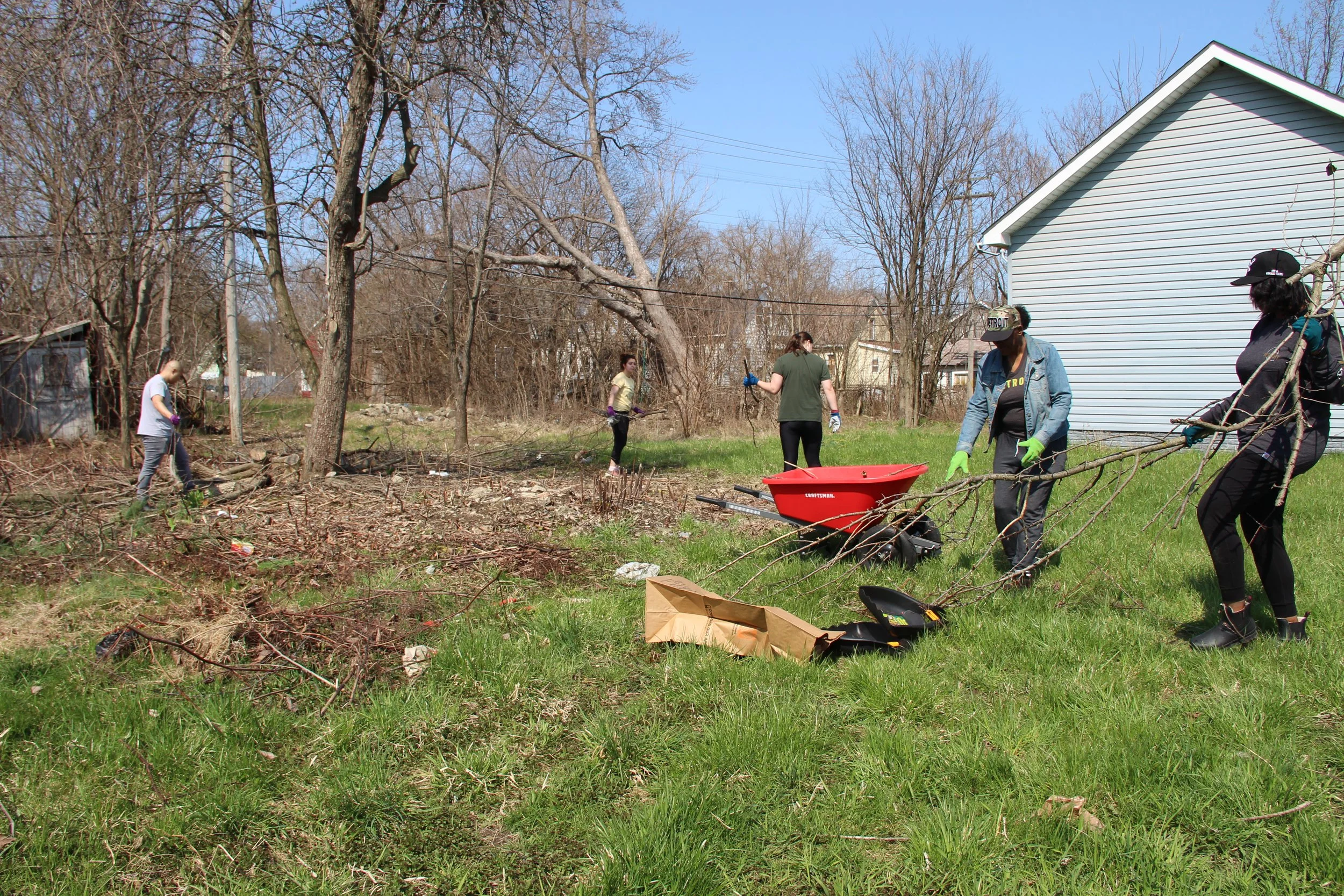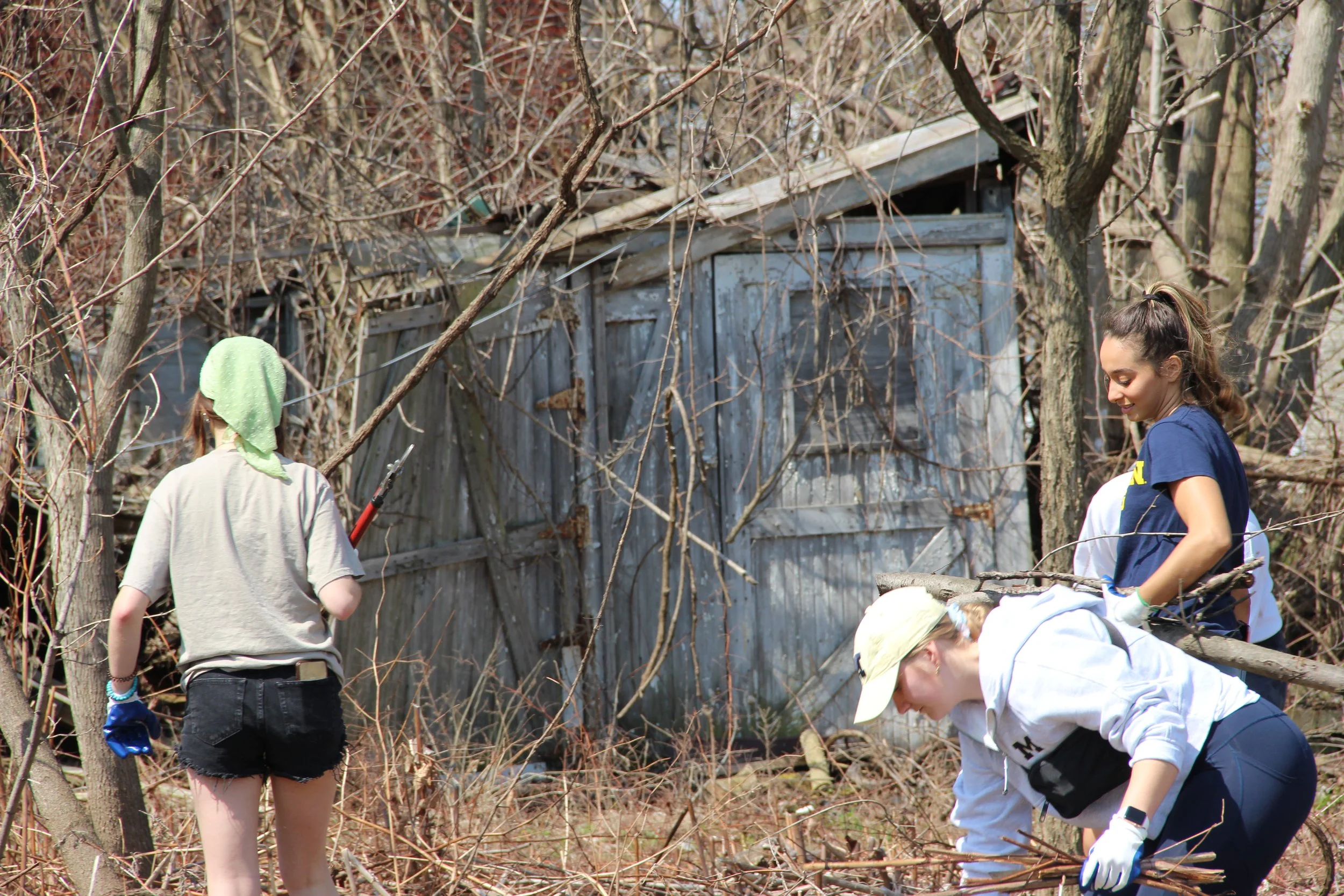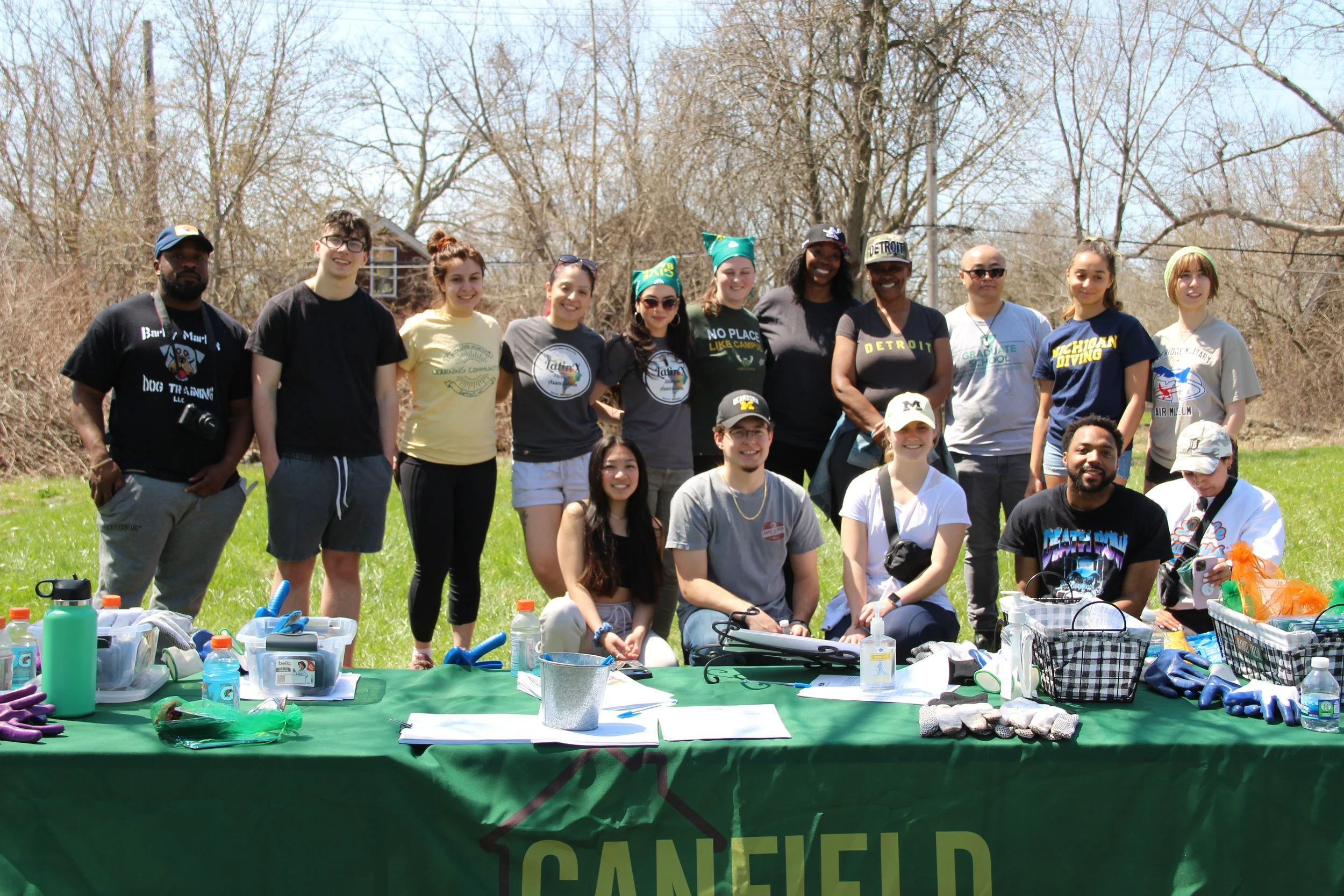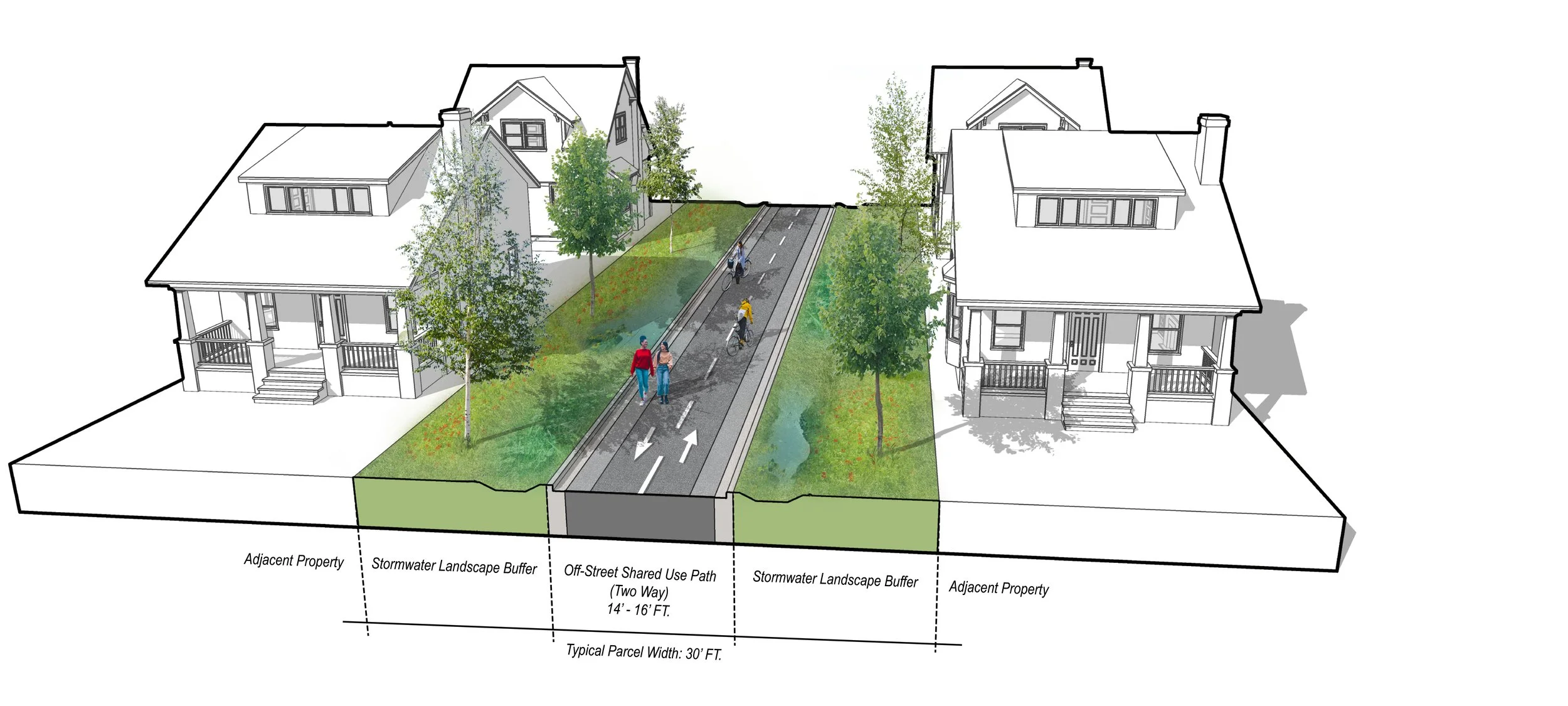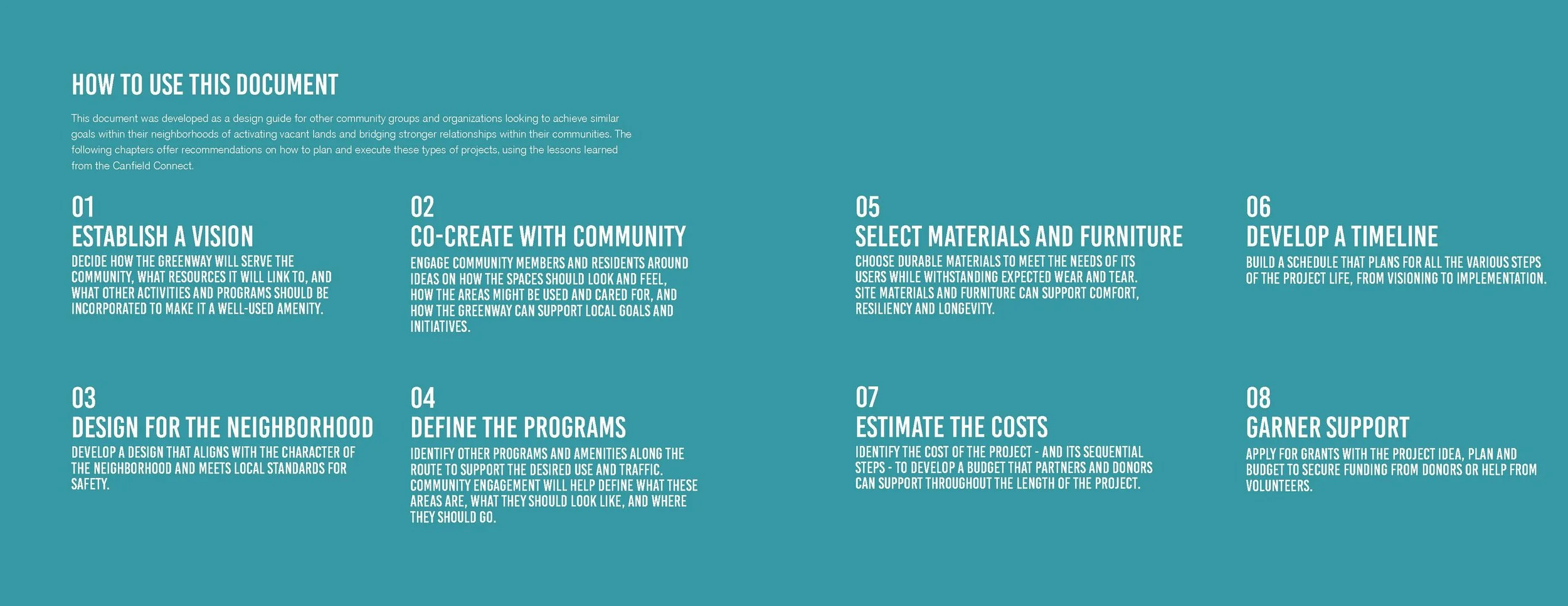The Canfield Connect
The Canfield Connect is envisioned as a 1.25 mile neighborhood greenway that will connect the residents of East Canfield Village from Brewer Park to Pingree Park through a network of on-road and off-road bicycle facilities. With many vacant and publicly owned properties in the area, the Canfield Connect will be an opportunity to activate these underutilized spaces with a premier recreational facility that gets neighbors outside, moving and engaging with their neighborhood. As a shared use path, the Canfield Connect greenway will accommodate walkers and bikers of all ages and capabilities to enjoy the beauty of a naturalized Detroit. This greenway project will serve as a catalyst that connects other landscape projects in the neighborhood together. Recognizing the lack of adequate east-west connections within the neighborhood, as well as safe bike facilities, the Canfield Connect will respond to this gap by reutilizing vacant residential land into a shared-use path that bring multi-modal mobility to the East Canfield Village neighborhood.
JIMA Studio led the design and documentation of the Connect’s design guidelines to support other community serving organizations looking to activate underutilized land in a similar fashion.
Client
Canfield Consortium
Location
Detroit, Michigan
Year
2021
The Canfield Connect is envisioned as a 1.25 mile neighborhood greenway that will connect the residents of East Canfield Village from Brewer Park to Pingree Park through a network of on-road and off-road bicycle facilities. The greenway will also connect riders to hyper-local businesses as an effort to catalyze economic development in the area.
The JIMA Studio team led a virtual workshop to help define the goals of the greenway to inform its design and route.
Strategic partner Wayne State University supported the effort by providing guidance over the planning process and volunteers for the initial clean-up of the greenway route.
Read me!
Team
Ujijji Williams
Location
Detroit, Michigan
Credits
Strategic Partnership: Wayne State University


